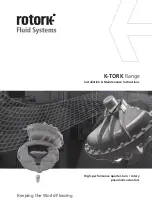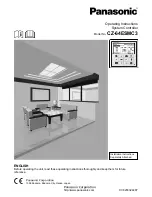
8
Maximum temperatures
The end-user must assure that the allowed maximum
temperature, as specified on the actuator nameplate, is not
exceeded and that the temperature on the external surface of
the actuator does not reach the ignition point in potentially
explosive environments.
The actuator surface temperature is affected by both
the temperature of the fluid flowing through the valve it
controls and the irradiation conditions of the installation. It
is the responsibility of the end user to ensure that surface
temperature of the valve and actuator assembly does not
exceed the minimum ignition temperature of any potentially
explosive gas/dust that could be present in the installation
area.
Dust and debris accumulated on the actuator will slow
cooling and contribute to an increase of its external
temperature.
Residual risk:
Maximum temperature on the surface of the actuator in
the presence of dust must be less than 2/3 of the ignition
temperature of the dust.
Prevention measure:
The external surface of the actuator must be kept clean,
considering that the minimum ignition point of dust must
be reduce by 75 °C for up to 5 mm thick deposits (of dust).
The user must plan a regular actuator surface cleaning
maintenance, to be done in accordance with the EN 1127-1
standard.
Residual risk:
Presence of hot surfaces.
Prevention measure:
Operators should wear protection gloves.
Actuator
Residual risk:
Safety risk for operators or possible damages to the
surrounding equipment due to lifting or handling. Such
risks can result from a failure to repair, handling errors or
a malfunctioning or incorrect use/wearing of protection
devices.
Prevention measure:
The end-user must make sure that personnel not authorised
to lift and handle the actuator must be kept out of the
working area. Authorised staff must be informed about the
specific risks they are exposed to and to which they may
expose others. See the Section 5 concerning the handling
and lifting of the actuator.
Residual risk:
Risk due to the loosening of the threaded connections of
the pneumatic tubes and the consequent ejection of fluid
under pressure.
Prevention measure:
Assure all the fittings are properly sealed so as to avoid
dangerous fluid jets on personnel operating the actuator.
Ensure tube fixing clamps are correctly tightened and sealed
in order to avoid irregular stress on the threaded connections.
Residual risk:
The pressurisation of the actuator/valve mounting bracket
of a closed type, due to line fluid (e.g. natural gas) leakages
through the valve stem seals. The leaked fluid could lead to
overpressure in the valve adaptor and generate a potentially
explosive atmosphere.
Prevention measure:
Apply a safety valve on the mounting bracket.
Residual risk:
Safety risk for operators and possible damage to the valve
due to incorrect setting of mechanical stops.
Prevention measure:
The end-user must assure that the position of the actuator
mechanical stop bolts coincides with the position of the valve
mechanical stop bolts (if applied). See section 9.2.
Contact the valve manufacturer to obtain instructions on
setting the valve mechanical stops.
Residual risk:
Safety risk for operators due to the blocking or clogging of
the valve in the intermediate position during a manoeuvre.
Prevention measure:
In this case it is not allowed to remove the actuator from the
valve. Contact Rotork.
Health & Safety









































